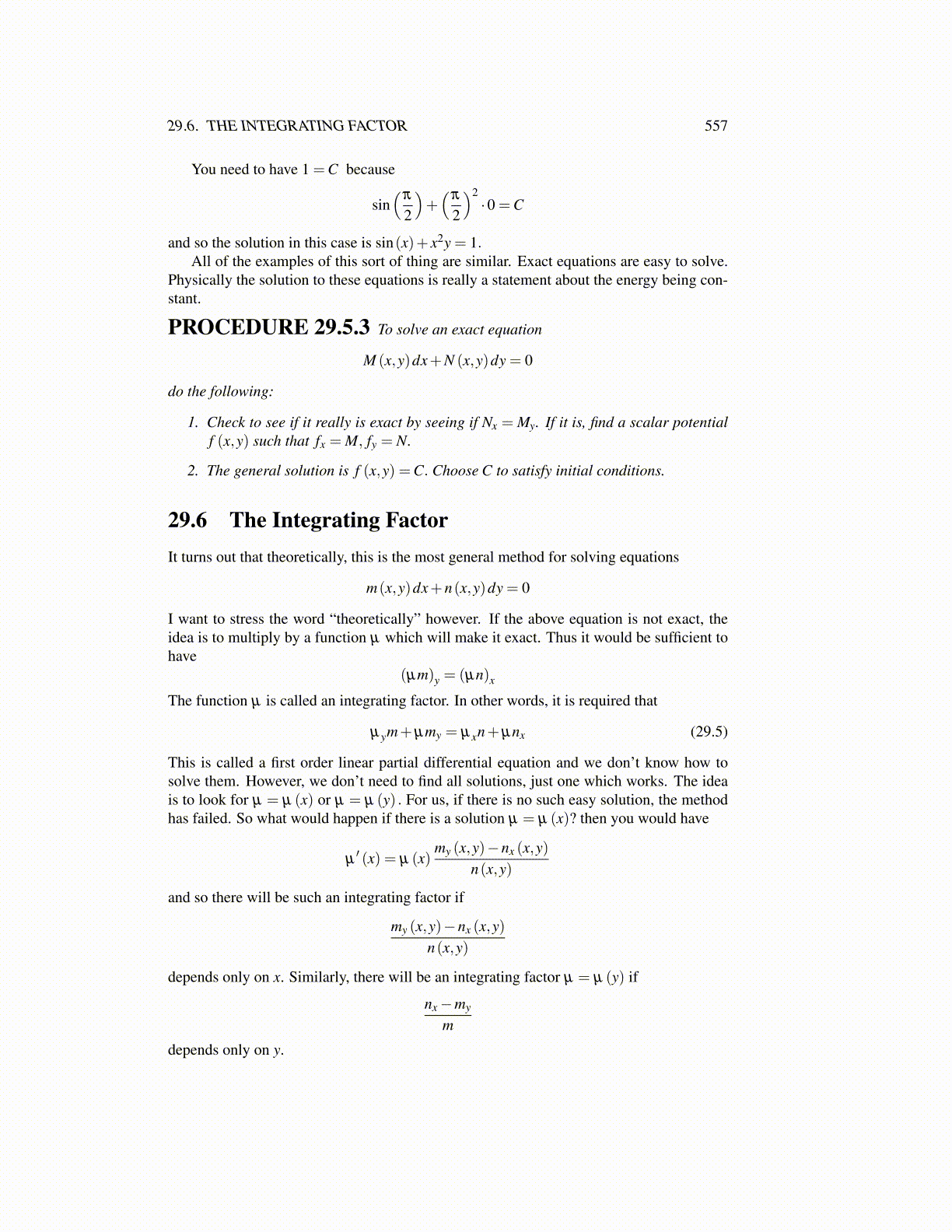
29.6. THE INTEGRATING FACTOR 557
You need to have 1 =C because
sin(
π
2
)+(
π
2
)2·0 =C
and so the solution in this case is sin(x)+ x2y = 1.All of the examples of this sort of thing are similar. Exact equations are easy to solve.
Physically the solution to these equations is really a statement about the energy being con-stant.
PROCEDURE 29.5.3 To solve an exact equation
M (x,y)dx+N (x,y)dy = 0
do the following:
1. Check to see if it really is exact by seeing if Nx = My. If it is, find a scalar potentialf (x,y) such that fx = M, fy = N.
2. The general solution is f (x,y) =C. Choose C to satisfy initial conditions.
29.6 The Integrating FactorIt turns out that theoretically, this is the most general method for solving equations
m(x,y)dx+n(x,y)dy = 0
I want to stress the word “theoretically” however. If the above equation is not exact, theidea is to multiply by a function µ which will make it exact. Thus it would be sufficient tohave
(µm)y = (µn)x
The function µ is called an integrating factor. In other words, it is required that
µym+µmy = µxn+µnx (29.5)
This is called a first order linear partial differential equation and we don’t know how tosolve them. However, we don’t need to find all solutions, just one which works. The ideais to look for µ = µ (x) or µ = µ (y) . For us, if there is no such easy solution, the methodhas failed. So what would happen if there is a solution µ = µ (x)? then you would have
µ′ (x) = µ (x)
my (x,y)−nx (x,y)n(x,y)
and so there will be such an integrating factor if
my (x,y)−nx (x,y)n(x,y)
depends only on x. Similarly, there will be an integrating factor µ = µ (y) if
nx−my
m
depends only on y.